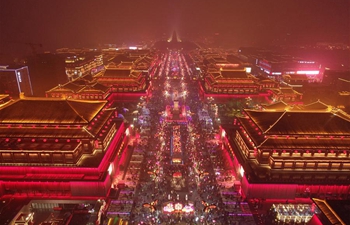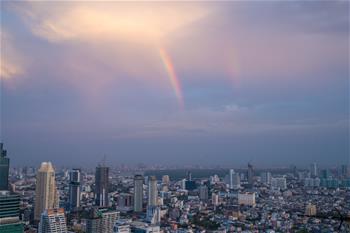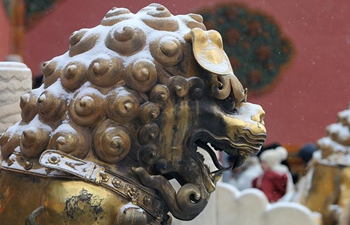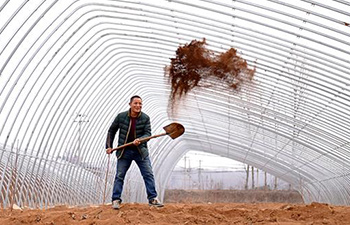By Eric J. Lyman
ROME, Feb. 18 (Xinhua) -- The Italian capital has survived nearly 30 centuries of history, including barbarian invasions, enemy occupations, and even the Black Plague. Now Rome's city government wants to make sure the city survives mass tourism.
Rome has been one of the world's top tourist destinations for centuries. But in recent decades, the advent of low-cost rail and air travel, combined with fewer visa restrictions for travelers from most countries have created a tourist boom.
VANDALISM
Last year, nearly 16 million tourists visited Rome, the 12th highest figure in the world. That compares to less than 1 million visitors a year in the early 1970s, when Rome's most famous case of tourist vandalism took place: a Hungarian man jumped a railing and severely damaged Michelangelo's Pieta -- considered by many to be the greatest Renaissance statue -- pounding it 15 times with a hammer before being subdued.
The vandalism did not stop after that attack.
In recent years, two women from California and one from France were arrested for carving their names in the Coliseum, and an Austrian teenager was arrested for trying to steal one of the ancient build's bricks.
More recently, a tourist made away with one of the tusks off of Gian Lorenzo Bernini's 17th-century Elephant and Obelisk statue near the Pantheon, another damaged the base of the "Barcaccia" boat statue near the Spanish Steps, and a third attempted to slice the corner off a Renaissance painting at a private museum.
Countless tourists have been fined or arrested for bathing in the Trevi Fountain and other landmarks, or for spray painting cultural landmarks.
Though such acts of vandalism are on the rise in many places around the world, Rome is particularly vulnerable because of the vast number of cultural landmarks in the city.
Rome's entire historical center is a World Heritage Site as defined by the United Nations Educational, Scientific, and Cultural Organization (UNESCO). It is the world's largest urban heritage site.
According to Rome's Special Superintendency for the Archaeological Heritage of Rome, the abuses happen because of inadequate security.
"The security is adequate for protecting monuments from terrorism and other risks, but a lack of security personnel causes a problem when there is a mass group of tourists," the Superintendency said in a statement.
MEASURES TO BE TAKEN
The city government said it wants to get serious about curtailing the abuses. It is working on a plan that would drastically increase fines for rule breakers. Most importantly, the new initiative would create a kind of "black list" of problematic visitors barred from returning to Rome. Football stadiums use similar rules to keep unruly fans from attending games there.
A separate plan would also finance an increase in security cameras installed around potentially vulnerable sites.
"With the number of cultural sites and the rising number of tourists, it is impossible to reduce vandalism to zero," Vanna Mannucci, vice-president of the Rome chapter of Italia Nostra, an advocacy group for cultural heritage, told Xinhua.
"Steps have to be taken to protect the city's cultural riches. There is no one solution. Visitors have to understand that these monuments are not just part of Rome's heritage, or Italian heritage. They are part of the world's heritage."
Pedro Barrajon, rector of the European University of Rome, which offers a degree in tourism and territorial protection, said that while tourism is a positive factor, it has changed compared to tourism in previous generations.
"Residents are more protective of their city than in the past, and the huge number of tourists represents another problem," Barrajon told Xinhua. "The larger the number of tourists, the more likely it is that a few will play outside the rules." Enditem













